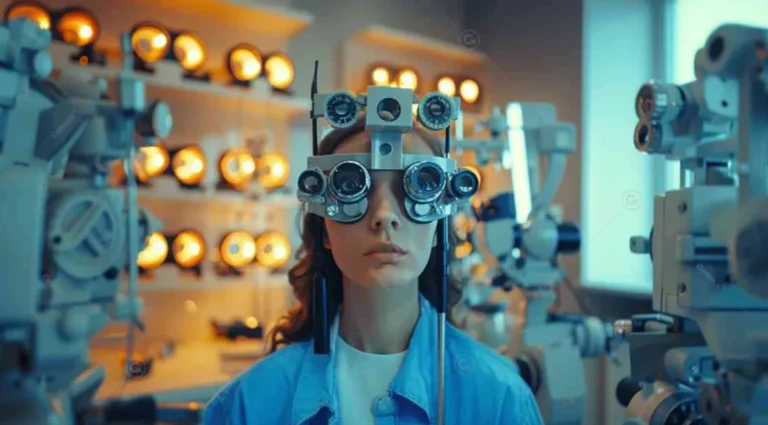In today’s world, prescription eyeglasses are more than just a tool for correcting vision; they are a blend of functionality, fashion, and technology. Whether you’re nearsighted, farsighted, or dealing with astigmatism, prescription eyeglasses are tailored to meet your specific visual needs. This article delves into the history, technology, types, and care of prescription eyeglasses, offering a comprehensive understanding of this essential accessory.
The Evolution of Prescription Eyeglasses
The journey of eyeglasses dates back to the 13th century when the first wearable glasses were invented in Italy. These rudimentary lenses, mounted in frames, were used primarily by monks and scholars to read and write. Over the centuries, advancements in lens technology, frame materials, and optical science transformed eyeglasses into the sophisticated tools we use today.
The 20th century saw the introduction of lightweight materials and stylish designs, making glasses not just a necessity but a fashion statement. Today, prescription eyeglasses combine cutting-edge technology with aesthetics, catering to a wide range of preferences and needs.
Understanding Your Prescription
A prescription for eyeglasses typically includes several key components:
- Sphere (SPH): Indicates the strength of the lens required to correct nearsightedness or farsightedness.
- Cylinder (CYL): Measures the degree of astigmatism, if present.
- Axis: Specifies the orientation of astigmatism correction.
- Add: Refers to the additional magnifying power for bifocal or progressive lenses.
Understanding these elements can help you better communicate with your optometrist and make informed decisions about your eyewear.
Types of Prescription Eyeglasses
Prescription eyeglasses come in various types, each designed to address specific visual requirements:
- Single-Vision Lenses:
- Correct a single field of vision, either near or far.
- Ideal for individuals with simple prescriptions.
- Bifocal Lenses:
- Feature two distinct optical powers for near and distance vision.
- Useful for individuals with presbyopia.
- Progressive Lenses:
- Offer a seamless transition between multiple vision zones (near, intermediate, and distance).
- Provide a more natural visual experience compared to bifocals.
- Photochromic Lenses:
- Automatically adjust to changing light conditions, darkening in sunlight and clearing indoors.
- Combine the benefits of prescription lenses and sunglasses.
- Blue Light Blocking Lenses:
- Reduce exposure to blue light emitted by digital screens.
- Help alleviate eye strain and improve sleep quality.
Frame Styles and Materials
Frames play a crucial role in the comfort and appearance of prescription eyeglasses. Modern frames are available in a variety of styles, colors, and materials, including:
- Metal Frames: Durable and lightweight, often made from titanium or stainless steel.
- Plastic Frames: Affordable and versatile, available in vibrant colors and patterns.
- Rimless Frames: Minimalistic and lightweight, ideal for a subtle look.
- Designer Frames: High-end options from luxury brands, combining style and functionality.
Caring for Your Prescription Eyeglasses
Proper maintenance can extend the lifespan of your eyeglasses and ensure optimal performance:
- Cleaning:
- Use a microfiber cloth and lens cleaner to remove smudges and dirt.
- Avoid using abrasive materials that can scratch the lenses.
- Storage:
- Store glasses in a protective case when not in use.
- Keep them away from extreme heat or moisture.
- Adjustments:
- Visit your optician for periodic adjustments to ensure a comfortable fit.
The Future of Prescription Eyeglasses
Advancements in technology are revolutionizing the world of prescription eyeglasses. Smart glasses with augmented reality features, lightweight materials, and customizable designs are just a glimpse of what’s to come. As innovation continues, eyeglasses will become even more integrated into our daily lives, offering enhanced functionality and style.
Conclusion
Prescription eyeglasses are a vital tool for millions of people worldwide, combining science, art, and technology to improve vision and quality of life. Whether you’re selecting your first pair or upgrading to the latest design, understanding the options available can help you make the best choice for your needs. With proper care and the right prescription, your eyeglasses can provide clear vision and complement your personal style for years to come.

